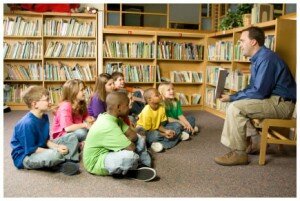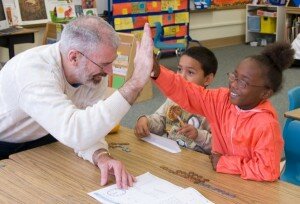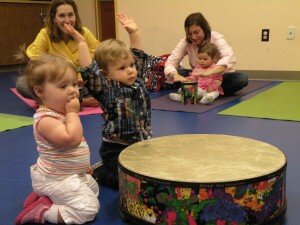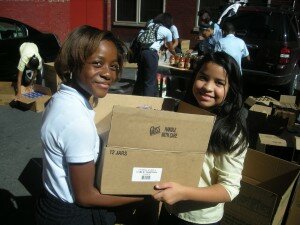 Volunteering in schools can be beneficial for everyone involved: the students get to meet older students or adults from outside of the school, the school benefits from the skills and talent that the volunteer brings to the table, and the volunteer can grow their network and circle of friends!
Volunteering in schools can be beneficial for everyone involved: the students get to meet older students or adults from outside of the school, the school benefits from the skills and talent that the volunteer brings to the table, and the volunteer can grow their network and circle of friends!
Figuring out how to volunteer with a school is an important step in planning your volunteer role, but so is understanding the costs (mostly time) and benefits of volunteering.
Benefits for Students
Volunteers in schools can play an important role in the lives of students. They can be an important adult connection for students. students who have involved adult volunteers in their school generally have better grades, better attendance, and higher graduation rates. Increased adult involvement also causes students to have more positive attitudes, more motivation, and higher self-esteem.
Volunteers may also help students by serving as a link between a school and a community. Students do better when schools, families, and communities work together, and involvement is strong.
Volunteers can be a strong advocate for the school they volunteer with. They can be a voice in the community for the school, helping to bring in needed resources or helping people to see the school as a positive force in their neighborhood.
Benefits for Schools
Schools can benefit from adult volunteers through:
- Increased individual attention for students
- Extra support on projects
-
 Stronger ties to the community
Stronger ties to the community
- Higher levels of parent-teacher communication
- Increased capacity to better serve a wider variety of youth needs
- Higher test/grade scores
- Strengthened programs
- Improved student behavior
Benefits for Volunteers
Volunteers benefit from volunteering, whether it’s from a closer peer-relationship with teachers and staff at the school or by building positive relationships with students. Volunteers benefit from their work with schools through:
- Opportunities to meet new people
- Improving communication, management, and interpersonal skills
- Improving problem-solving skills
- Increased self-confidence
- A clearer understanding of school structure and curriculum
- Gaining valuable job experience
- The opportunity to serve as a role model for students
- The chance to inspire, educate, and motivate future generations
Parents who are active in their child’s school can benefits at home, too. Parent volunteers can form tighter bonds with their children and often find themselves having more open discussions about life at, and outside of, school. Family members that volunteer aid their child’s transition from the home to school. By assisting in this transition, parents learn the structure and expectations of schools.
If you want to volunteer at your child’s school, get in touch with the school’s principal to find out where volunteers are needed in the school. If
Do you volunteer at a school? What benefits do you see from what you do? Let us know in the comments!

 Give a boost to a school club. In the era of disappearing recess and music and arts programs, schools may need help providing these kinds of classes. If your child is involved with any clubs or activities at school, call the person in charge of the group and see if you can help with transportation, supplies, or planning.
Give a boost to a school club. In the era of disappearing recess and music and arts programs, schools may need help providing these kinds of classes. If your child is involved with any clubs or activities at school, call the person in charge of the group and see if you can help with transportation, supplies, or planning. Start a cleanup crew. Are crushed soda cans and scrap paper taking over the school grounds? Why not plan a school cleanup day? Include parents, students, teachers, and any community members who want to help. Participants will feel a sense of ownership and will be less likely to ignore litter in the future.
Start a cleanup crew. Are crushed soda cans and scrap paper taking over the school grounds? Why not plan a school cleanup day? Include parents, students, teachers, and any community members who want to help. Participants will feel a sense of ownership and will be less likely to ignore litter in the future. Today’s post comes from Davida Gatlin, Manager, Training and Technical Assistance for
Today’s post comes from Davida Gatlin, Manager, Training and Technical Assistance for  Participation in service-learning…
Participation in service-learning… This week NBC is hosted
This week NBC is hosted  Creating a community garden is a great way to teach children important principles of math and science, while at the same time sharing lessons about the environment and health.
Creating a community garden is a great way to teach children important principles of math and science, while at the same time sharing lessons about the environment and health.








 Also, did you know that October 23rd is Make A Difference Day,the largest, annual day of service?
Also, did you know that October 23rd is Make A Difference Day,the largest, annual day of service?
